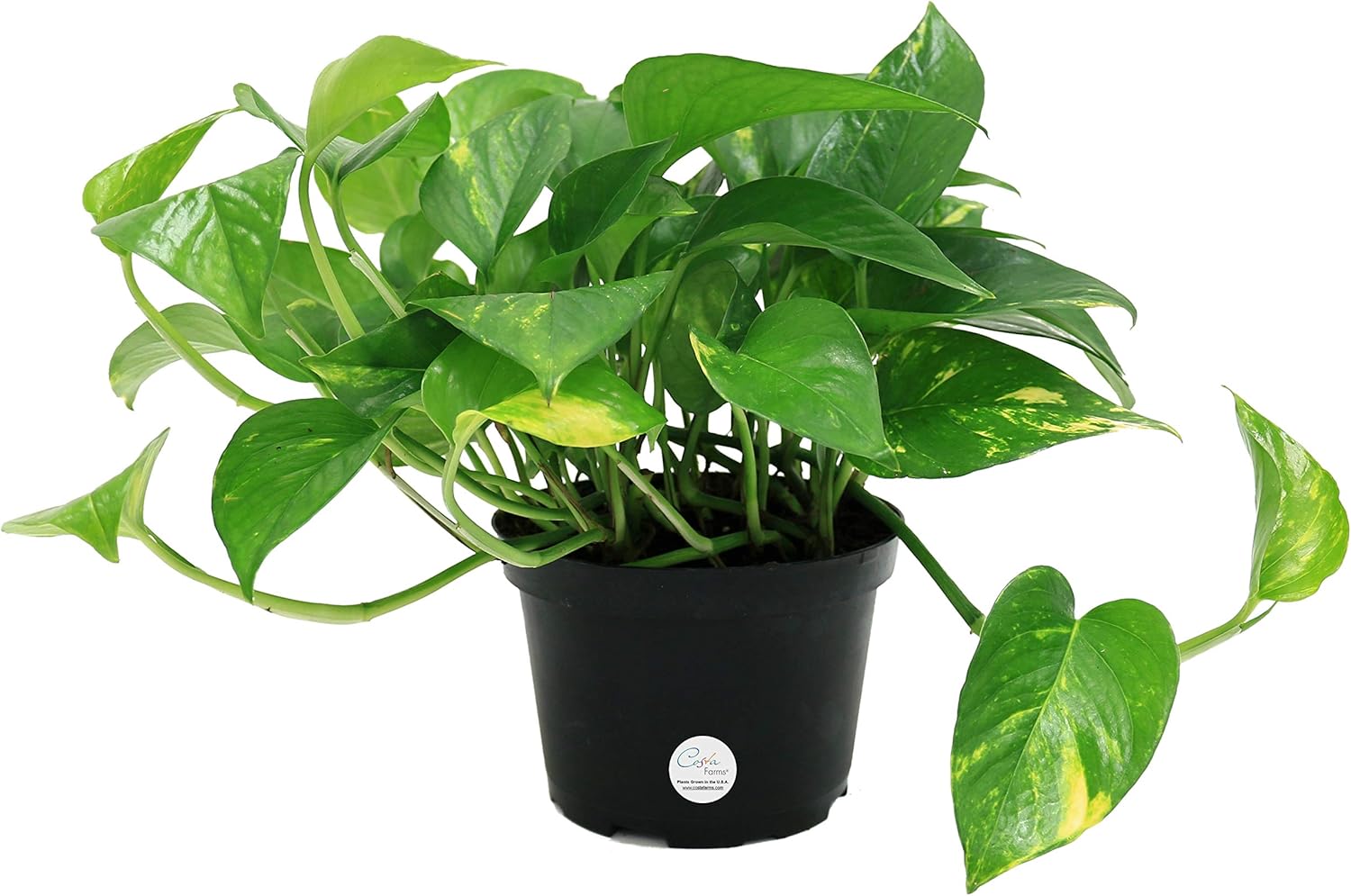Tags: Pothos - Plants -
New Pothos

Pothos available now
Pothos (Epipremnum aureum) is one of those tried-and-true houseplants almost everyone has or has had. In fact, it was one of the first houseplants I grew, and it’s one of the most popular houseplants available.
We’re a fan of the good old golden pothos, but being passionate about plants, we offer several other pothos varieties. Online, I get some questions about which varieties are which, so here’s a quick guide.
Golden Pothos
The traditional pothos variety is golden pothos (Epipremnum aureum). It features heart-shaped mid-green foliage splashed in creamy gold. If you grow this variety up a totem and give it lots of light and warmth, you’ll find the leaves can grow quite large. In fact, outdoors in frost-free areas, the leaves can reach 12 inches wide or more! (Note: golden pothos shows invasive tendencies in areas like South Florida. We recommend against planting it outdoors in Zones 10 and 11.)
Marble Queen pothos
Marble Queen (Epipremnum aureum ‘Marble Queen’) is another common pothos variety. It features green heart-shaped leaves heavily splashed and streaked with creamy white. The foliage is usually similar in size to golden pothos. Marble Queen may be more or less variegated, depending on the particular branch it was propagated from. Here at Exotic Angel® Plants, we only grow propagate Marble Queen from our most highly variegated mother plants.
Neon Pothos
Neon pothos (Epipremnum ‘Neon’) is one of the most distinct varieties. Its heart-shaped leaves are bright chartreuse or golden yellow in color with no variegation. The newer, younger leaves tend to be brighter than older leaves. The foliage deepens in color with age. To get the best color, grow Neon pothos in bright light. In low-light spots, the color will be duller and darker.
Jessenia pothos
Jessenia pothos (Epipremnum ‘Jessenia’) displays green, heart-shaped leaves abundantly marked with chartreuse. Like Marble Queen (to which Jessenia is quite similar), every leaf will be different. It’s usually not too hard to tell the difference between Marble Queen and Jessenia when they’re next to each other. The variegation of Marble Queen is much lighter than the limey-green variegation of Jessenia. Jessenia tends to grow more slowly than golden pothos.
Manjula pothos
Manjula pothos (Epipremnum ‘Manjula’) is another patented variety produced by the University of Florida. It features wide, heart-shaped green leaves. The foliage is variegated with shades of silver, white, cream, and light green. Each leaf is different; many leaves will have large patches of green. Others will be heavily flecked and splashed. With Manjula, there’s typically not a crisp line between the variegated areas – so the creamy areas tend to have spots or speckles of other colors. Another way to tell Manjula apart from other pothos varieties is that the leaves have wavy edges and don’t lay as flat as other pothos do.
Pearls and Jade pothos
Pears and Jade pothos (Epipremnum ‘Pearls and Jade’) is an eye-catching variety that sports green leaves variegated with white and silvery-gray. The variegation tends to appear more on the edges of the foliage, rather than the middle. Unlike some other pothos varieties, the white sections of the foliage are often mottled with green and silvery gray tones. Pearls and Jade pothos tends to have smaller leaves than some of the other varieties and tends to grow more slowly. Note: Pearls and Jade pothos was produced by the University of Florida and is a patented variety.
Cebu Blue pothos
Here’s one for the plant collectors! This pothos (Epipremnum pinnatum ‘Cebu Blue’) doesn’t show off variegation on its arrow-shaped blue-green leaves. The foliage often has a bit of a metallic sheen, making it distinct from other pothos types. While the young leaves are vague arrow-shaped, Cebu Blue pothos can produce large, blue-green leaves with natural splits, much like a Monstera. It takes time for the plant to mature and warm, bright conditions to develop this adult-type leaf.